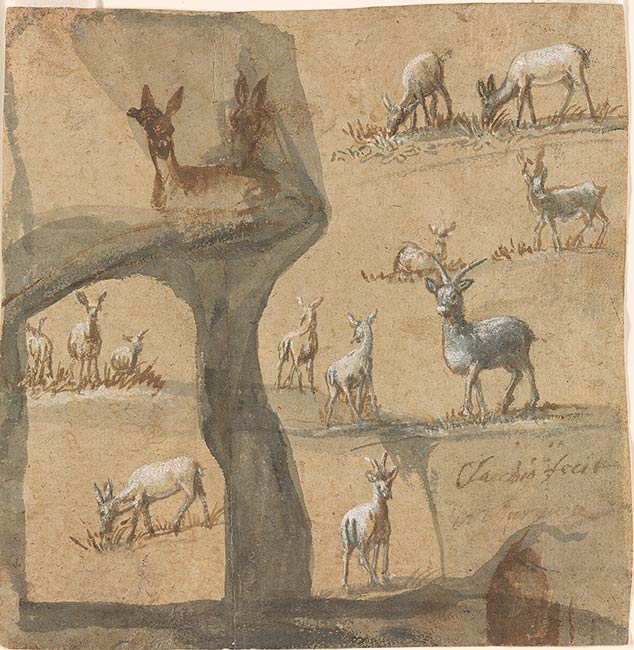

This drawing was previously the first page in what Marcel Roethlisberger dubbed the Animal Album, a late eighteenth- or early nineteenth-century binding containing 64 sheets of studies by Claude pasted to its pages. When the dealer Hans Calmann acquired the Animal Album at sale in 1957, it had been kept intact in the Odescalchi family in Rome since at least the eighteenth century. Calmann dismantled the album and sold the sheets individually. The majority of the studies were of animals, which Roethlisberger dated to the 1630s and '40s, the period in which Claude made most of his nature drawings. This page is the only one that is signed and it is the largest of the sheets from the album. The inscription identifies the location where Claude observed the deer as the park of the Villa Borghese, Rome, which was renowned from the early seventeenth century for its wildlife.
The rather curious form created by gray ink washing over the page is challenging to explain. The gray wash, along with a few strokes of brown ink, is used to create the undulating earth on which the deer graze. The darker vertical wash takes the form of a tree trunk but then washes around and over the animals at upper left. The curving, grotto like form at center left follows the curve of lines in brown wash. An old vertical fold suggests this strange shape was seen as a distraction to the otherwise composed sheet.
Signed and inscribed at lower right in pen and brown ink, "Claudio fecit / in bourghese".
Odescalchi family, former owner.
Calmann, Hans M., 1899-1982, former owner.
Marcel Roethlisberger, Claude Lorrain, The Drawings, Berkelely, California, 1968, vol. I, p. 144, no. 264; vol. 11, fig. 264.
100 Master drawings from the Morgan Library & Museum. München : Hirmer, 2008, no. 73, repr. [Kurt Zeitler]
